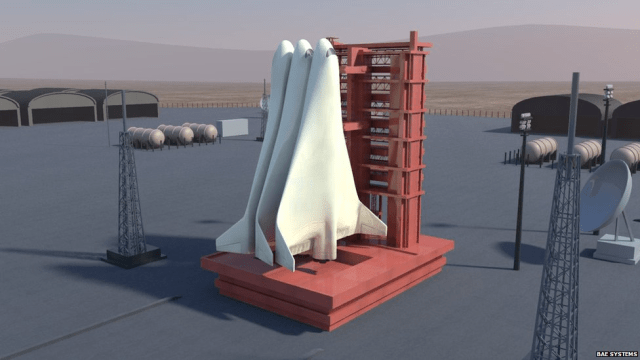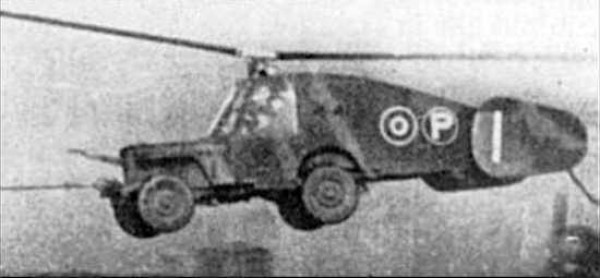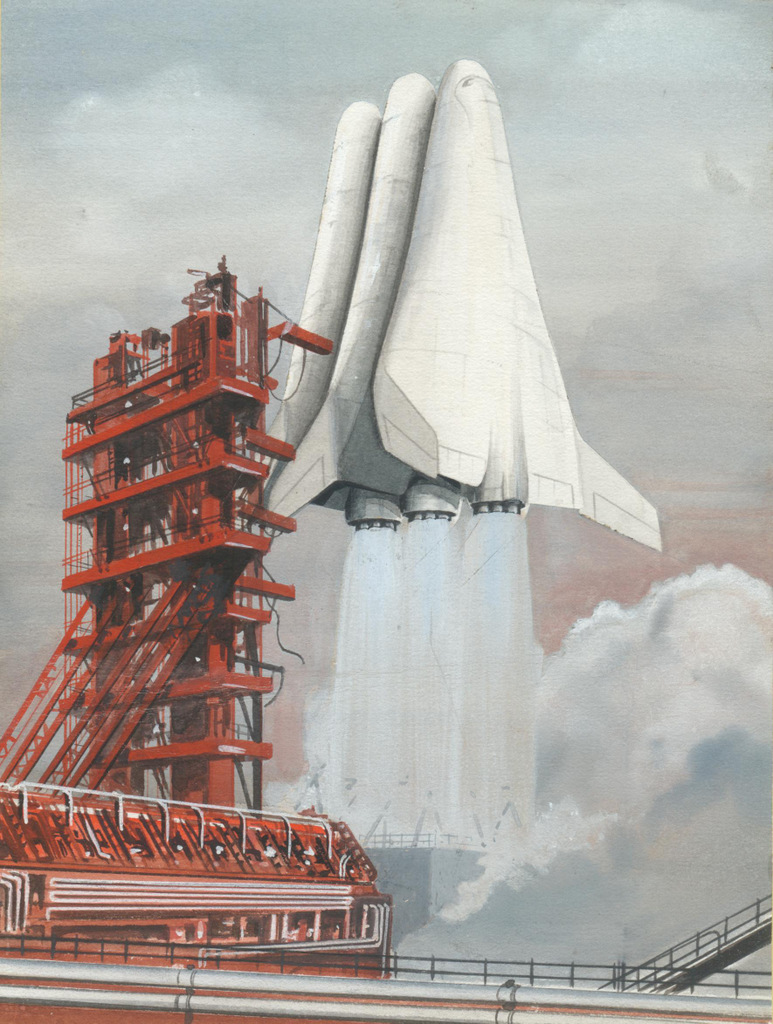If the music‘s anything to go by, pretty much everyone was on something in the ’60s — and that includes the engineers. BAE Systems has recently dug up some totally batshit-crazy ideas that were seriously being kicked around by its ‘crack’ team of engineers, and they’re both totally ridiculous and dangerously awesome.
The designs were recently unearthed, and have been animated by some people with too much time on their hands to show what the concepts would have been capable of, had government had a spare few billion and an over-zealous rubber stamp. The contrast between the modern animation and the sketches from the people at the time is quite remarkable, as is the quite incredible distance their collective minds were outside the box.
Flying Jeep
Drawing inspiration seemingly from Batman Begins, the British Army came up with the idea of a reconnaissance jeep that could jump over enemy positions, chasms, giant armies of enemy unicorns and the like. The power came from twelve lift fans, whose angle could be adjusted dependant on the situation to give both forwards momentum and vertical lift.
Crazy though it sounds, it wasn’t the most outlandish idea at the time. During WWII, both British and American armies had prototype flying jeep platforms, although both of them looked more like helicopters than normal 4x4s — see the British attempt above. The UK version, catchily nicknamed the Rotabuggy, actually took to the sky at one point, although it was gliding, with the power coming from the Bentley towing it. (Yes, towing a prototype flying jeep behind a Bentley. Can’t innovate, my arse.)
The ’60s version was developed by the BAE team at BAC Warton over the course of a decade, and was worked on in association with the MoD’s R&D team; although the process got to a fairly advanced stage, the project was tragically cancelled owing to projected costs getting too high. In addition, defence spending took a fairly heft hit in the second half of the 20th century, forcing the government to re-evaluate its defence spending priorities — flying jeeps wouldn’t have been much help in the face of the 2nd USSR Shock Army, it was felt.
Fighter Jet Take-Off Platform
You thought the jeep was a bit off-the-wall? Try this, a platform that would take off vertically with a plane on its back, and then allow the fighter to launch and land. This would allow conventional aircraft to operate from forest clearings and areas without a runway, in the same manner as the Harrier, without the need for the jets to be modified (the Harrier wasn’t capable of supersonic flight, as a result of its engines being configured for vertical flight rather than the horizontal cruising-along-bombing-things most planes are designed for).
Again, the Fighter Jet Take-Off Platform wasn’t alone in its world of wackiness. During the whole Cold War thing, both sides poured huge amounts of money into aircraft that could operate from confined spaces, like the fronline of a pan-Europe war or the deck of a small aircraft carrier. Probably the most dangerous and ludicrous was the Ryan X-13, which was just a fighter jet that had enough thrust to hover vertically when it was sitting on its tail. However, it was hilariously unstable, and it’s a bit of a miracle no-one was killed test-flying the two prototypes.
That said, the BAE concept is pretty crazy. Kind of like Thunderbird 2, the BAE thing uses its 56 jet engines (yep, count ‘em — fifty-six!) to lift off vertically, which then allows the fighter on its back to transition into horizontal flight. It can also work as a VTOL transporter, delivering heavy supplies to locations without a runway (kind of like, hmm, the Chinook helicopter). Once again, common sense and budgetary requirements meant this project was stabbed in the heart and lungs sometime in the mid 1960s.
The Hypersonic Aircraft
This is actually my favourite — a reusable space plane, a la Space Shuttle, but where the boosters are also reusable. It works by sandwiching three delta-wing Concord-lookalikes together, creating an unholy jet-engine ménage à trois that had the power to accelerate to five times the speed of sound. Once it was up to speed, the two outside aircraft would break off and glide to ground, leaving the middle craft to be flung into orbit. Oh, and it was called MUSTARD, which is so much classier than Apollo.
Despite the development costs being cited as ’20 to 30 times cheaper’ than the gigantic Saturn rockets that almost got Tom Hanks to the Moon, the government decided not to proceed with the programme, which the developer, Tom Smith, reckons was down to being “too far ahead of its time”.
Inter-City VTOL Transporter
We’ve already seen one inter-city vertical-takeoff craft, and this one is a little tame by comparison. A project from Hawker Siddeley, of Harrier Jump-Jet fame, it was an attempt to make a passenger liner capable of vertical takeoff and landing, in the same vein as the Harrier.
It was deemed too impractical in the end — unlike the Harrier (and like the current F-35 that Britain’s buying for its new carriers), the prototype used lift fans along the side for the vertical lift — the Harrier simply used ‘vectored thrust’, meaning the main engines it used for flight could be re-directed downwards to allow it to hover. Lining the plane with lift fans led to a serious amount of extra weight, which coupled with the extra fuel, made the plane financially impractical and unstable in flight.
More seriously, however, I don’t think there’s any real demand for VTOL passenger planes. VTOL planes can normally carry a smaller payload, owing to the difficulties of lifting off and setting down at a slower speed than a conventional aircraft. Given that commercial airliners are all about carrying the most people and stuff from A to B at the lowest cost, a VTOL passenger carrier doesn’t make any sense, especially considering those lift fans would hardly be quieter than a 747.
That said, big VTOL planes aren’t quite the stuff of fantasy. In an attempt to solve the Iran Hostage Crisis, the Americans developed a plan in 1980 to modify a big-ass C-130 transport plane to be able to land and take off inside a football stadium. To do so, they stuck rockets facing backwards and forwards, to decelerate the plane when landing and to shoot it to take-off speed within a hundred metres.
The plan actually got off the drawing board — several C-130 Hercules were modified successfully, and the plan was only called off when, on one of the final test flights, the pilots fired the slow-me-down rockets a bit early, causing the plane to basically fall out of the sky and the wings to fall off (cut to about 2:00 in the video above for the money shot).




